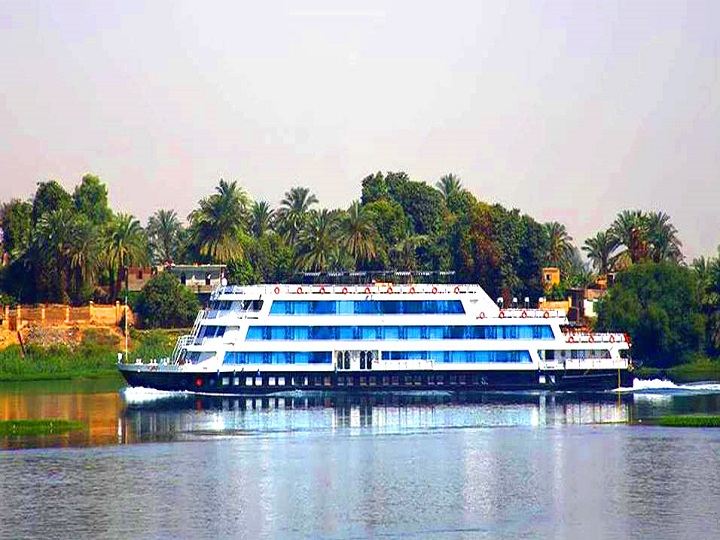This website uses cookies so that we can provide you with the best user experience possible. Cookie information is stored in your browser and performs functions such as recognising you when you return to our website and helping our team to understand which sections of the website you find most interesting and useful.

By Hesham Elgammal on 19 Jan 2025
Discovering Egypt: The Red Sea in 2025
In 2025, Egypt’s Red Sea coast is more captivating than ever—an idyllic destination where golden deserts meet crystal-clear waters, and ancient culture blends seamlessly with modern luxury. Whether you’re diving into vibrant coral reefs, relaxing at world-class resorts, or exploring hidden islands, the Red Sea has become a top choice for travelers seeking both adventure and serenity.
Stretching from the Gulf of Suez down to the Sudanese border, the Red Sea Riviera is a sun-soaked paradise teeming with natural wonders. This year, enhanced infrastructure, eco-friendly tourism efforts, and new flight routes have made Red Sea destinations more accessible than ever before. Resorts in Hurghada, El Gouna, and Marsa Alam are offering tailored experiences for every type of traveler—families, honeymooners, divers, and solo explorers alike.
One of the biggest draws of the Red Sea in 2025 is its unparalleled marine life. The region’s coral reefs are among the most biodiverse in the world, attracting divers and snorkelers from across the globe. New protected marine parks and sustainable diving programs are helping preserve these underwater treasures while allowing visitors to witness the vibrant ecosystems up close.
Beyond the shoreline, the Red Sea region offers desert safaris, cultural excursions, and wellness retreats. Luxurious beachfront resorts now offer yoga retreats, spa treatments, and holistic experiences designed to rejuvenate the mind and body. Meanwhile, cultural tours into the Eastern Desert give travelers a chance to encounter ancient monasteries, Bedouin traditions, and hidden archaeological gems.
In 2025, the Red Sea is also seeing a rise in eco-conscious travel. From solar-powered hotels to plastic-free beach initiatives, the region is embracing sustainable tourism without compromising on comfort or quality. This thoughtful approach allows visitors to enjoy the beauty of Egypt’s coast while helping to preserve it for generations to come.
Whether you’re chasing adrenaline on a kitesurfing board, savoring freshly caught seafood by the sea, or simply soaking in a fiery sunset over the water, the Red Sea offers a rich and unforgettable escape. With its warm climate, welcoming communities, and endless experiences, Egypt’s Red Sea in 2025 is more than a destination—it’s a lifestyle.
Come and discover the magic where land, sea, and sky meet in perfect harmony.
The Red Sea is a conduit between the continents of Africa and Asia. It connects the Indian Ocean at the south through the Gulf of Aden. The Sinai Peninsula and the Gulf of Aqaba are located in north of the Red Sea.
The round areas are very reputable for their majestic and amazing sites for tourism, especially the ecotourism. Its depth is between 500 m near the coast and 2500 m in the center. It contains the most amazing coral reef chains in the world. The Red Sea is one of the most beautiful and mysterious seas in the world, and it is one of the largest tourist attraction areas in the world. When you visit the Red Sea, you can enjoy the rarest, beautiful, and amazing species of sea creatures.
The Red Sea is known for its very excellent temperature, or sometimes hot temperature. This refers to the location of the Red Sea in an arid land, between the desert and semi-desert. The water of the Red Sea is always freshly renewed or exchanged because of the rains and the connection with the Indian Ocean. The Red Sea has very saline water. This is a result of the high temperature and the process of evaporation.
The tide range in the Red Sea is between 6m in the north and 9m in the south, while the center is approximately without a tide. Temporal and spatial current variations are as low as 0.5 m and are controlled by the wind. Generally, the velocity of the tidal current is between 50-60 cm per second, with a maximum of 1 m per second. The Red Sea is controlled by the influence of regular and seasonally reversible winds. Surface water temperature is about 21-25 °C. There are good temperatures and visibility around.
This article was updated and re-written in part by Hesham El Gammal; on January 19th, 2025 + fact-checked.
Categories
- Egypt and Jordan Tours (12)
- Egypt Destinations (26)
- Egypt Nile Cruises (40)
- Egypt Sightseeing (14)
- Egypt Tour Packages (17)
- infographics (1)
-

Nile Cruisers Reviews
25 Mar 2025
-

Why Choose Nile Cruisers to Book Your Egypt Nile Cruise?
12 Dec 2025
-

Celebrate Christmas in Egypt: Best Egypt Travel Tour Packages for Year-End Getaways
12 Dec 2025
-

Make Your Year-End Special: Festive Egypt Tour Packages for Winter Travel
12 Dec 2025
-

The Lake Nasser Luxury Cruise Ships
09 Dec 2025
-

Sacred Egypt – Spiritual Tours
07 Dec 2025
-

Nile Cruise from Cairo to Aswan
06 Dec 2025
-

Nile Cruisers Reviews
25 Mar 2025
-

Why Choose Nile Cruisers to Book Your Egypt Nile Cruise?
12 Dec 2025
-

Celebrate Christmas in Egypt: Best Egypt Travel Tour Packages for Year-End Getaways
12 Dec 2025
-

Make Your Year-End Special: Festive Egypt Tour Packages for Winter Travel
12 Dec 2025
-

The Lake Nasser Luxury Cruise Ships
09 Dec 2025












Comments